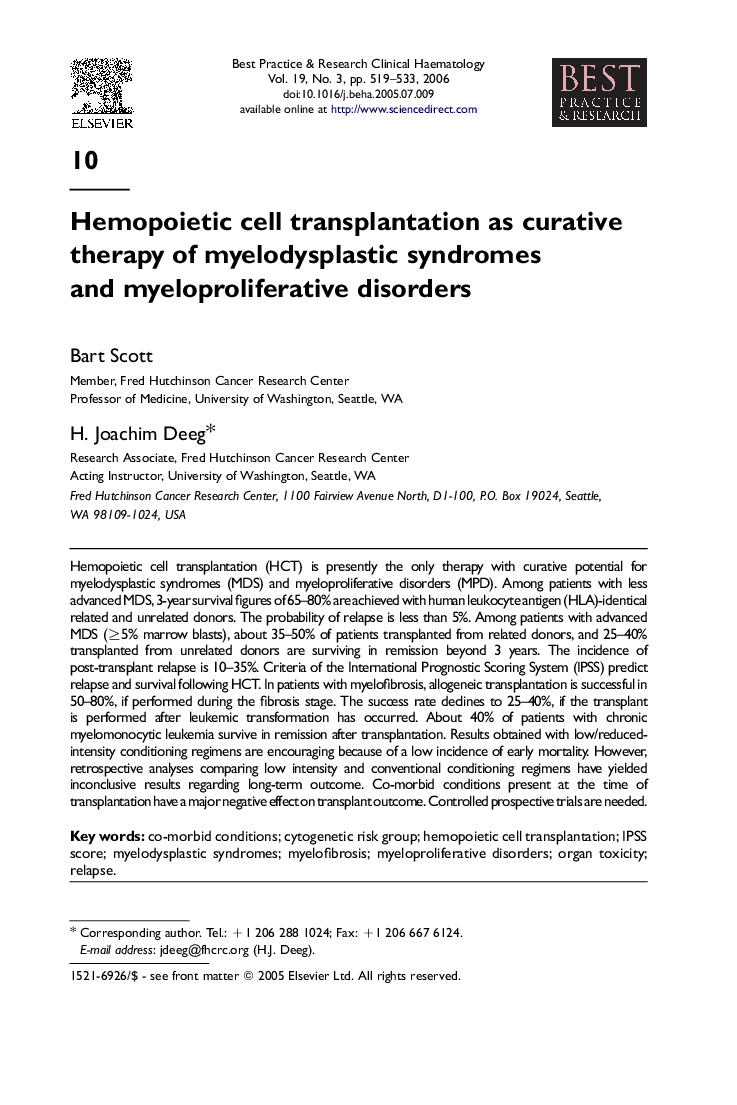| Article ID | Journal | Published Year | Pages | File Type |
|---|---|---|---|---|
| 2100530 | Best Practice & Research Clinical Haematology | 2006 | 15 Pages |
Abstract
Hemopoietic cell transplantation (HCT) is presently the only therapy with curative potential for myelodysplastic syndromes (MDS) and myeloproliferative disorders (MPD). Among patients with less advanced MDS, 3-year survival figures of 65-80% are achieved with human leukocyte antigen (HLA)-identical related and unrelated donors. The probability of relapse is less than 5%. Among patients with advanced MDS (â¥5% marrow blasts), about 35-50% of patients transplanted from related donors, and 25-40% transplanted from unrelated donors are surviving in remission beyond 3 years. The incidence of post-transplant relapse is 10-35%. Criteria of the International Prognostic Scoring System (IPSS) predict relapse and survival following HCT. In patients with myelofibrosis, allogeneic transplantation is successful in 50-80%, if performed during the fibrosis stage. The success rate declines to 25-40%, if the transplant is performed after leukemic transformation has occurred. About 40% of patients with chronic myelomonocytic leukemia survive in remission after transplantation. Results obtained with low/reduced-intensity conditioning regimens are encouraging because of a low incidence of early mortality. However, retrospective analyses comparing low intensity and conventional conditioning regimens have yielded inconclusive results regarding long-term outcome. Co-morbid conditions present at the time of transplantation have a major negative effect on transplant outcome. Controlled prospective trials are needed.
Keywords
Related Topics
Life Sciences
Biochemistry, Genetics and Molecular Biology
Cancer Research
Authors
Bart (Member, Fred Hutchinson Cancer Research CenterProfessor of Medicine, University of Washington, Seattle, WA), H. Joachim (Research Associate, Fred Hutchinson Cancer Research CenterActing Instructor, University of Washington, Seattle, WA),
